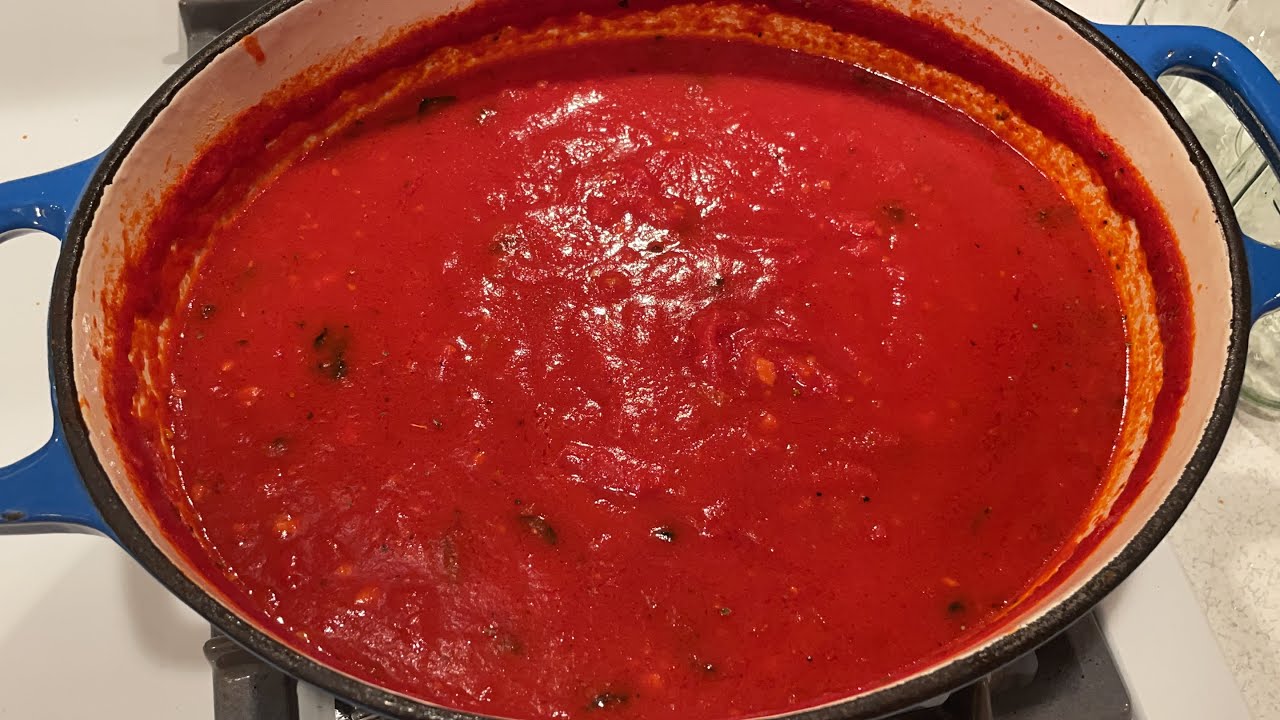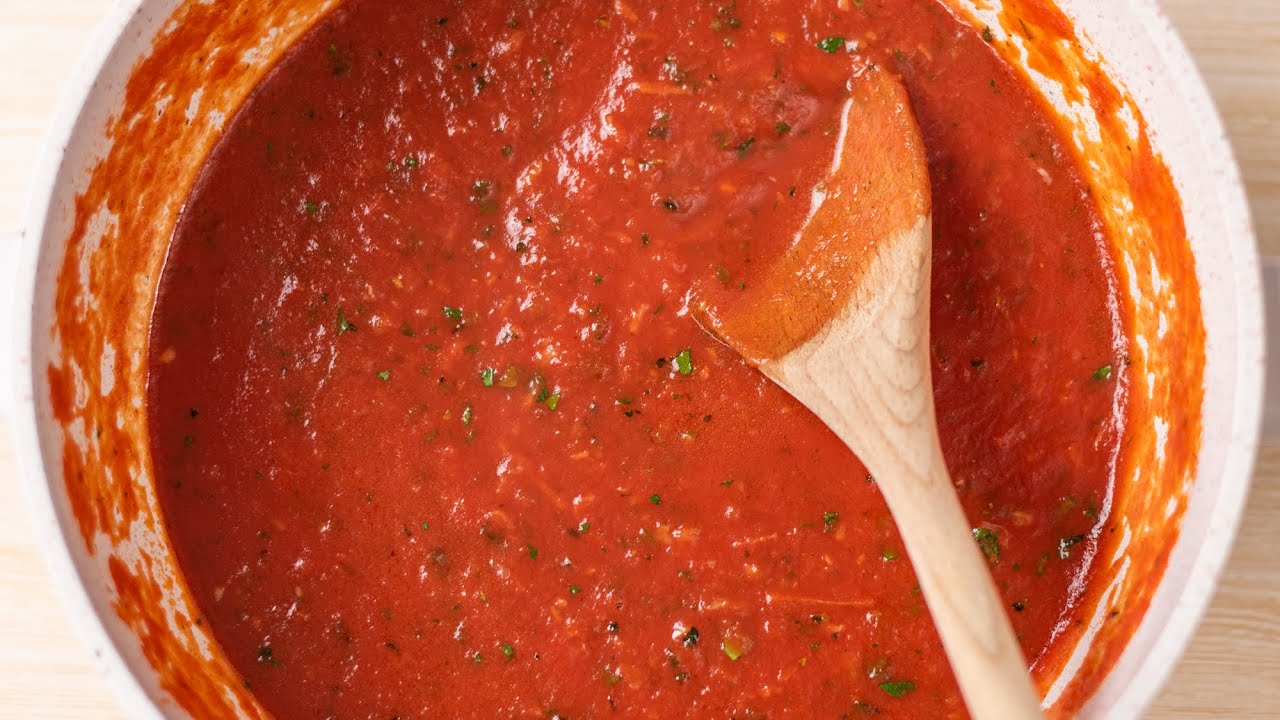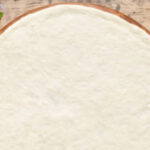In the world of culinary arts, sauces are not just mere condiments; they are the soulful expressions that define a dish’s character and authenticity. Among these, Marinara sauce stands out as a quintessential emblem of Italian cuisine, especially when it comes to its celebrated role in pizza making. This article delves into “what is Marinara Pizza Sauce?“, unraveling its history, ingredients, and the artistry behind its creation. Crafted from a simple yet meticulously balanced blend of tomatoes, garlic, herbs, and olive oil, Marinara sauce embodies the essence of traditional Italian cooking, offering a tantalizing glimpse into Italy’s culinary heritage.
With expert insights and tips, we aim to transform your approach to pizza making, elevating the humble Marinara from a simple sauce to a masterpiece of flavor. Join us as we embark on this savory expedition to discover the heart and soul of Marinara Pizza Sauce. Engage your senses, ignite your curiosity, and prepare to be whisked away on a flavor-filled journey that promises to enhance your culinary repertoire and leave you craving for more.
The Essence of Marinara Sauce
What Is Marinara Pizza Sauce?

At its core, marinara sauce consists of just a few ingredients: tomatoes, garlic, onions, olive oil, and Italian herbs. The tomatoes—fresh or canned—provide the rich, tangy base. Garlic and onions add savory depth, while olive oil balances acidity. Basil, oregano, parsley, and other herbs infuse signature Italian flavor.
Marinara likely originated in Naples, Italy. Its name may reference mariners who brought tomatoes and spices from abroad to Italian ports. Another theory suggests “marinara” honors the mariner’s wife (la marinara) who created the sauce. Either way, this humble sauce boasts cosmopolitan beginnings.
Nutritionally, marinara contains antioxidants from tomatoes, anti-inflammatory benefits from olive oil, and immunity-boosting power from garlic and onions. With no cream or butter, it makes a lighter alternative to meatier Italian sauces.
Marinara and Pizza Sauce
Marinara sauce and pizza sauce are distinct in their ingredients and uses:
- Pizza Sauce: Pizza sauce is typically non-cooked pureed tomatoes with minor herbs and spices added. It is thicker and meant for pizza bases, preventing the crust from getting soggy during baking.
- Marinara Sauce: Marinara sauce is a chunkier sauce made with crushed tomatoes, garlic, onion, oil, and Italian herbs. It features a deeper and richer flavor profile compared to pizza sauce. Marinara is simmered slowly and used in various dishes like pasta, chicken parmesan, and meatball sauce.
The key differences between the two sauces include the cooking process (pizza sauce can be prepared quickly while marinara is simmered), flavor profile (marinara is richer), and consistency (pizza sauce is thicker). While they share some similarities, they are best used for their intended purposes to enhance the flavors of specific dishes.
Marinara vs. Spaghetti Sauce
Read on to learn more : Satisfy Your Cravings: Totino’s Pizza Air Fryer Style
Marinara forms the base of many Italian sauces, including spaghetti sauce. While marinara relies on simple ingredients, spaghetti sauce often gets enriched with extras like meat, mushrooms, sugar, or cream. These additions customize flavor, texture, and heartiness for coating long noodles.
To transform basic marinara into spaghetti sauce, try adding browned ground beef or meatballs, diced vegetables like carrots and mushrooms, red wine, crushed red pepper flakes, and a pinch of sugar to balance acidity. The possibilities are endless.
How To Make Easy Homemade Marinara Sauce?
To experience marinara’s true authentic flavor, make your own with fresh, ripe tomatoes at the peak of summer. For the rest of the year, high-quality jarred or canned tomatoes make a decent substitute. Just add garlic, onions, olive oil, herbs, and seasoning to taste.
When storing sauce, keep it in airtight containers in the fridge for 5-7 days, or 2-3 months in the freezer. If boiling jars for preservation, add a teaspoon of lemon juice or vinegar to maximize safety.
Common pitfalls include over-herbing with dried spices, under-seasoning, simmering too long, and scorching garlic. Go light on dried herbs and gradually adjust seasoning. Simmer just until warmed through and flavors meld, 10-15 minutes. Garlic burns easily, so add it toward the end.
Culinary Applications Beyond Tradition
Though famously paired with pasta and pizza, marinara also enlivens seafood, chicken, and vegetables. Drizzle marinara over shrimp or scallops before broiling. Bake chicken breast topped with mozzarella and marinara for Chicken Parmesan. Or roast vegetables like zucchini, eggplant, and cauliflower with a marinara coating.
Read on to learn more : How Many People Does a Large Pizza Feed? Happy Guests
Marinara’s versatility extends to pasta shapes beyond spaghetti. Toss with penne, rigatoni, or farfalle for a heartier texture. Or keep it simple with linguine, which catches thin marinara nicely. Match pasta shape to marinara consistency.
For pizza toppings, marinara shines through. Keep it minimalist with just cheese, herbs, and a drizzle of olive oil. Or go bold by piling on meats, vegetables, and other embellishments. The marinara foundation ties it all together.
Expert Insights and Health Considerations
For depth of flavor in marinara or pizza sauce, chefs recommend using tomato paste or sun-dried tomatoes along with fresh or canned whole tomatoes. They also suggest reserving a spoonful of the pasta or pizza cooking water, which contains starch, to stir back into the finished sauce for extra richness.
When choosing jarred sauce, dietitians recommend low-sodium options to limit salt intake. Individuals managing acid reflux should also opt for low-acid choices clearly labeled accordingly. For those with histamine intolerance, sauces made from canned tomatoes may be better tolerated than those using tomato paste or powder.
Sustainability and Ethics in Sauce Selection

To lighten your environmental impact, seek out sauce made with organic produce from responsible farming practices. Or use fresh tomatoes from your own garden. Supporting local or small-scale sauce artisans also benefits communities.
For vegan and vegetarian diets, look for marinara and pizza sauce avoiding animal-based ingredients like cheese or meat. Or make your own easily by omitting the cheese and substituting olive oil for any butter called for. Homemade also allows total control over ingredients used.
Conclusion: What Is Marinara Pizza Sauce?
Marinara sauce lays a flavorful foundation across Italian cuisines, though it often gets overshadowed by spaghetti and pizza sauce. Understanding marinara’s essence equips us to use it creatively beyond just pasta and pizza. Whether making sauce from scratch or choosing a product, savor both the heritage and versatility of genuine marinara.

Chef John Sebastian has been cooking up a storm at his simple place for years. Offering a variety of international foods, Chef John Sebastian has something for everyone- and he makes it all look easy!
He’s been featured in various food magazines and cooking shows, and his restaurant has become a local favorite in the community. When he’s not in the kitchen, Chef John Sebastian enjoys spending time with his family.









